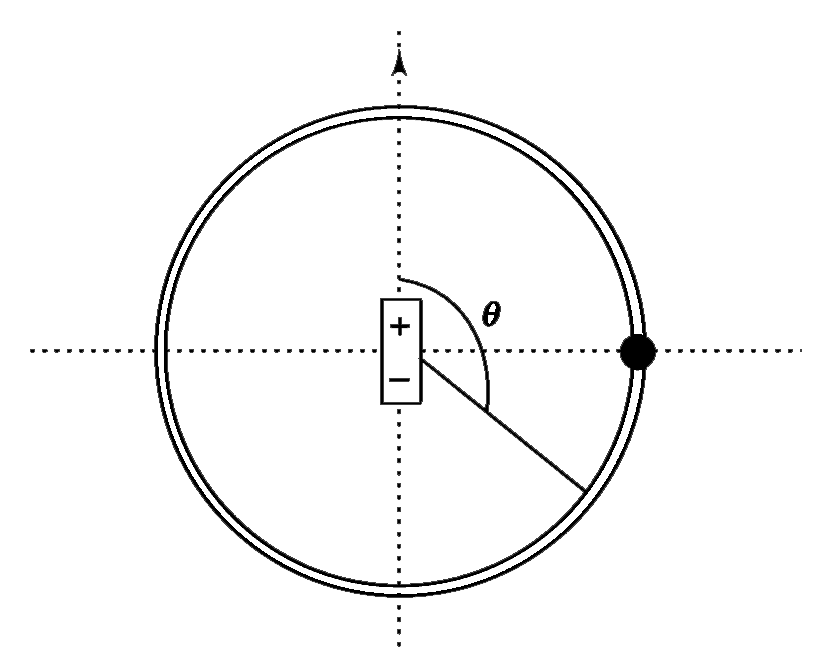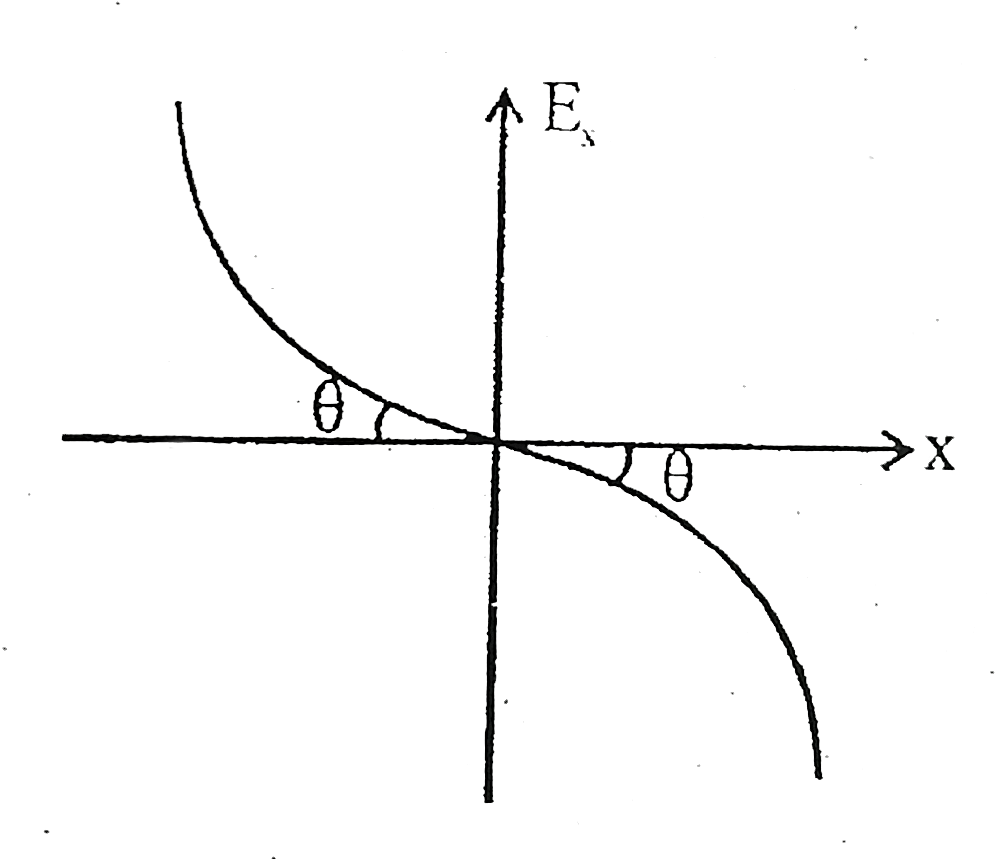A small, electrically charged bead can slide on a circular, frictionless, thin, insulating ring. Charge on the bead is Q and its mass is m . A small electric dipole, having dipole moment P is fixed at the centre of the circle with the dipole’s axis lying in the plane of the circle. Initially, the bead is held on the perpendicular bisector of the dipole (see fig.) Ignore gravity and answer the following questions.
(a) Write the speed of the bead when it reaches the position θ shown in the figure. (b) Find the normal force exerted by the ring on the bead at position θ. (c) How does the bead move after it is released? Where will the bead first stop after being released? (d) How would the bead move in the absence of the ring?

The correct Answer is:(a). v=√2−QKPcosθmr2
(b). Zero
(c). The bead oscillates. It stops at a point dametrically opposite to its starting point.
(d). Exactly same as it would move in the presence of the ring
Step by step video, text & image solution for A small, electrically charged bead can slide on a circular, frictionless, thin, insulating ring. Charge on the bead is Q and its mass is m . A small electric dipole, having dipole moment P is fixed at the centre of the circle with the dipole’s axis lying in the plane of the circle. Initially, the bead is held on the perpendicular bisector of the dipole (see fig.) Ignore gravity and answer the following questions. (a) Write the speed of the bead when it reaches the position theta shown in the figure. (b) Find the normal force exerted by the ring on the bead at position theta. (c) How does the bead move after it is released? Where will the bead first stop after being released? (d) How would the bead move in the absence of the ring? by Physics experts to help you in doubts & scoring excellent marks in Class 12 exams.
Topper's Solved these Questions
Similar Questions
An electric dipole of dipole moment P is lying along uniform electric field E. The work done in rotating the dipole by 37° is
View SolutionA short electric dipole has dipole moment p. Find the distance of farthest point from the dipole where (a) potential due to the dipole is V0 (b) Electric field due to the dipole is E0
View Solution
Knowledge Check
- Question 1 - Select One
Electric dipole moment is
AscalerBneither scaler nor vectorCa vector directed from −q→+qDa vector directed from +q→−q - Question 2 - Select One
Electric dipole moment is
AscalerBneither scaler vectorCa vector directed from −q→+qDa vector directed from +q→−q - Question 3 - Select One
The ratio of the electric field due to an electric dipole on its axis and on the perpendicular bisector of the dipole is -
A1:2B2:1C1:4D4:1
Short electric dipole of dipole moment P is placed at the centre of a ring of radius R having charge Q uniformly distributed on its circumference. The dipole moment vector is along the axis of the ring. Find force on the dipole due to the ring.
View SolutionOn the perpendicular bisector of an electric dipole, electric intensity E and potential V are
View SolutionA dipole of dipole moment P is kept at the centre of a ring of radius R and charge Q the dipole moment has direction along the ring due to the dipole is :
View SolutionVariation of x-component of electric field with x-coordinate in a region is given in the graph. A small electric dipole having dipole moment p0ˆi is placed at origin, then net force on the dipole is:
 View Solution
View SolutionWhen a test charge is brough in from infinity along the perpendicular bisector of an electric dipole the work done is
View Solution

